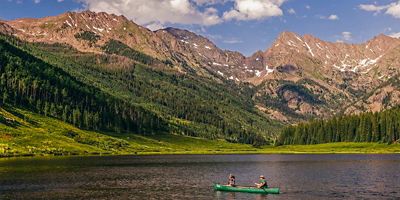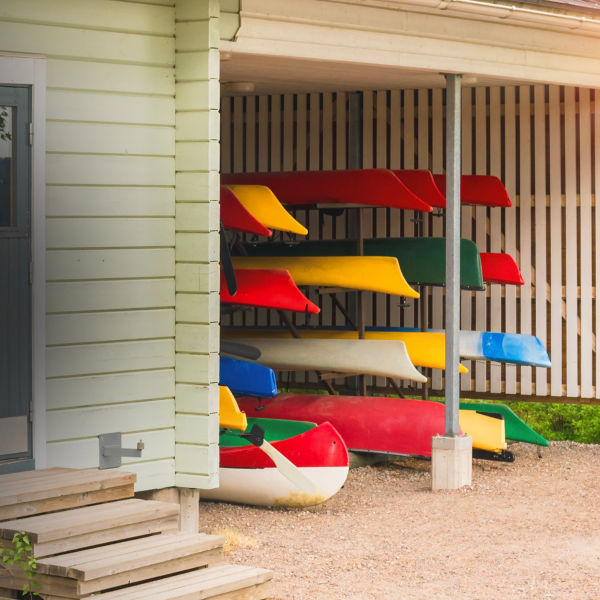
But that largely two-dimensional playing field changes when you hit the river, where dynamic features like eddies, waves and other hydraulics come into play with the water’s eternal quest for sea level. Following are a few tips for reading water and safely navigating the current downriver.
Know Your Takeout
Before launching, know where your takeout is located, and how to recognize it from the water. This will also help you estimate how much time your paddle outing might take.
Paddle Within Your Limits
Even savvy whitewater paddlers know ahead of time what sort of waterway they’re undertaking. Don’t be caught off guard trying to negotiate a Class IV rapid on a section you thought was only Class II. (Rapids are rated on a scale outlined below from Class I to VI, with I being slow-moving flatwater and VI being technically unrunnable; until you can consistently roll your kayak or capably self-rescue in the event of a swim, you should probably avoid paddling anything above Class II.)
Understand Eddies
Eddies are your friend. They’re areas of the river, often on the inside of corners and behind boulders and other obstacles, where the current is calmer and moving back upstream. Recognize them as areas of slower-moving water compared to the main current of the river. Always look for them, and use them to rest, relax, wait for others upstream, and plan your next move: Hint: Cross the eddylines with authority, leaning your boat into the eddy when paddling in and leaning downstream when paddling (called “peeling”) out.
Straight into Waves
If you encounter a wave train, or series of waves, and are feeling uncomfortable, keep your boat straight and paddle. Having blades in the water aids stability and increases your momentum for punching through waves and holes.
Waves vs. Holes
Differentiating the two takes a dedicated and experienced eye. In general, waves are smoother-looking from above and less abrupt. Holes, or hydraulics, on the other hand, often have sharp horizon lines, hiding a recirculating hydraulic below that can flip and even hold boats (especially if you hit them sideways or with no momentum). If you find yourself hitting one unexpectedly, keep it straight and paddle downriver, keeping your paddle blades in the deep water below to help pull you out.
Obstacles and Hazards
Strainers (i.e. downed trees) and lowhead dams are two of the most dangerous obstacles on the river. Scout ahead for them and avoid them at all costs (lowhead dams are marked by an abrupt, uniform horizon line spanning the river). Also beware of drifting into boulders and other obstacles by turning your boat at an angle and paddling away; if you do hit something, lean into it (not away), until you slide off.
Follow the Tongue
At the head of a rapid, look for a smooth, green ramp or “tongue” leading into the rapid; that’s usually the deepest and least obstructed part, setting you up for the best line.
Scout Any Horizon Lines
Your vantage is low from a paddlecraft, inhibiting your ability to see what’s downstream when the gradient picks up. If you’re in a craft that allows it (ie. raft, canoe, or inflatable kayak), try kneeling or standing up to get a better view. Pull over or eddy out and scout if you don’t know the rapid or can’t see a safe line.
Know Deep From Shallow
Get practice recognizing sections of deep water from shallow, which can beach your craft. Look for subtle color and texture changes in the water ahead; deeper water will often appear darker, while shallow water is often marked by small ripples.
Safety Basics
If you swim in moving water, the first thing to do is try and relax. You should already be wearing a properly fitting PFD, appropriate footwear and clothing for the water temperature, and, if in whitewater, a helmet. Your best bet is proactive self-rescue: either swim back to your craft, right it and climb back on board (if in an inflatable or sit-on-top); or swim to shore. If in shallow water or rapids, assume the safety position of rolling onto your back with your feet up and facing downstream to ward off rocks, with your hands off to the side for maneuvering around obstacles. Warning: Never try to stand up in moving water past knee-high as it can result in a foot entrapment.





















